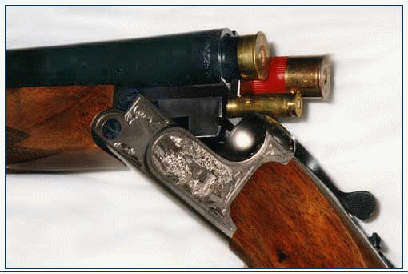

 The Accurate Reloading Forums
The Accurate Reloading Forums  THE ACCURATE RELOADING.COM FORUMS
THE ACCURATE RELOADING.COM FORUMS  Rifles
Rifles  Combination Guns And Drillings
Combination Guns And Drillings  Sauer Cape Gun Questions
Sauer Cape Gun QuestionsGo  | New  | Find  | Notify  | Tools  | Reply  |  |
| One of Us |
I just got a very nice old J P Sauer and Sons Cape Gun. It is chambered 9x57R X 12ga (2 ¾). Overall condition is very good. It came with some loaded ammo, 20 empty cases and reloading dies. The previous owner shot it a bit and I am already having great fun with it. 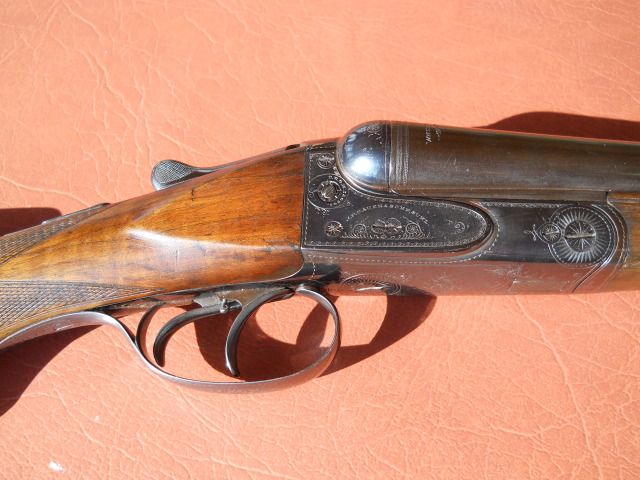 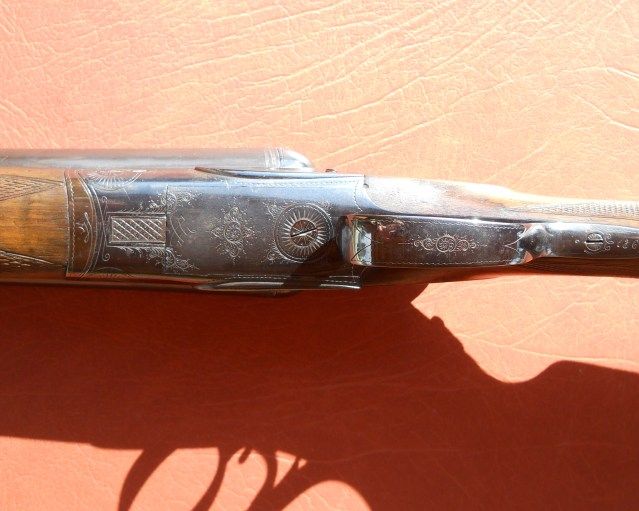 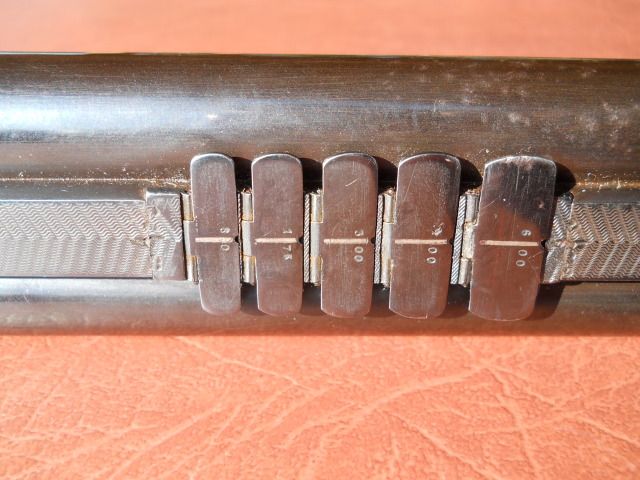 I do have several questions though. The serial # is 136XXX. Any ideas about how old it might be? The stock has a small (ivory?) medallion inlaid that says “R Muller Strand St. Cape Town”.  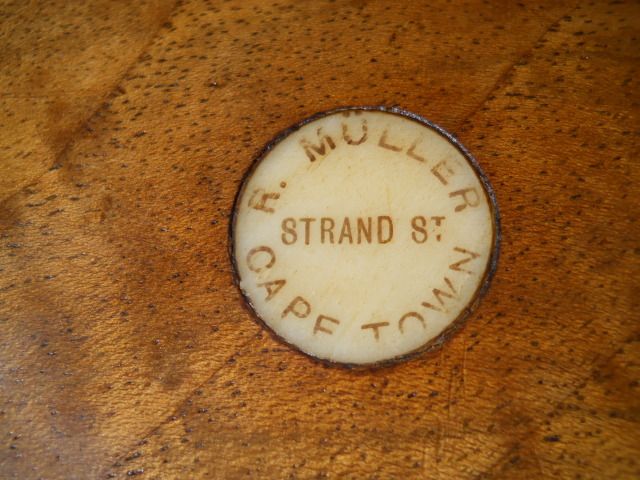 I understand that Mr. Muller had some type of shop. Would this medallion have been put into all rifles sold, rental guns, personal gun? The shotgun barrel is marked “Fluss Stahl” and 13/1 with a 12 inside of a circle. The rifle barrel is marked “Guss Stahl” and has 118/35. Rifle side is also marked 2,7gGBP and ST.M.G. There is also a crown over a U proof mark. Under the forend, stamped into the shotgun barrel is a Crown over a G, on the rifle side is a similar Crown over S. There are also a few other marks including what looks like a man standing with a spear or staff. Can anybody offer any translation of these marks. I absolutely love this gun and took a pair of squirrels with a right and left this morning. 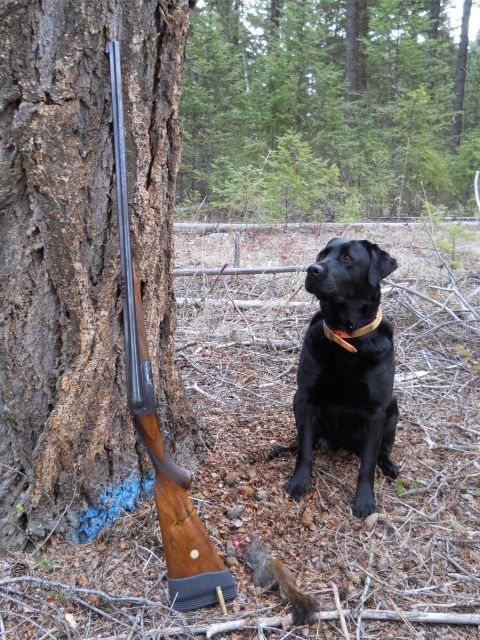 Not too bad for its first walk in the woods in more than a few years! It is definitely a keeper and will be going back to Zim with me on my next trip. Thanks for any information that you can provide. JCS Anybody got a line on properly headstamped brass? "The difference between adventure and disaster is preparation." "The problem with quoting info from the internet is that you can never be sure it is accurate" Abraham Lincoln | ||
|
| one of us |
Here goes. The S is the smoothbore proof. The G is proof of a rifled barrel. Sure these aren't reversed in your description? The U is the final visual inspection. The StMG means jacketed bullets. the 2.7 g GBP is the proof load. The 12 in a circle is the gauge. The 13/1 refers to the actual barrel dimensions, I believe. The 118/35 is the gauge designation of a .350 bore (not groove). According to the German Gun Collectors site, this is the most common designation for a 9.3mm. That would indicate you have a 9.3x57R, not a 9x57R. Actually, that is likely a more common cartridge during that time. The markings for the proof load would put the date of manufacture at 1912 or before. If there is a 3 or 4 digit number somewhere, that will be a date code. For instance 511 or 5/11 or 5.11 would be May 1911 proof. Something like 1012 or 10/12, or 10.12 would be October 1912 proof. According to the translations I could find, Fluss Stahl is mild steel or fluid steel, Guss Stahl is cast steel. Look to see if there are any proofs with a crown over an N, or if there is an N next to the proof load. If so, it is Nitro proofed. If not, only black powder. The other mark you mention may be the proof house mark. Some pictures of the mark would help. This is a good site for info: http://www.germanguns.com/technical.html | |||
|
| One of Us |
According to one reference book I've got there are two versions of a man holding a planted staff with his right hand and his left hand on his hip. One looks like a cave man with a cloth around his waist and looking to his right. The other dressed like a woodsman looking to his left. Both are indicated " J.P. Sauer and Sohn of West Germany trademark". I would have more confidence in the stamped date regarding age. | |||
|
| One of Us |
Wow Art, great info, thanks. There are Nitro proofs on it. I will have to wait till I get home to check on some of the other issues. I am not a reloader so not big on bullet selection. So with the .350 bore, would that still use the 250grain .356 bullets. That is what the previous owner (and now I) have been loading and shooting with great results. Once again, thanks for all of your help. "The difference between adventure and disaster is preparation." "The problem with quoting info from the internet is that you can never be sure it is accurate" Abraham Lincoln | |||
|
| one of us |
I think it would be very important for you to slug the barrel and do a chamber cast before you shoot much more. There is a lot of confusion concerning the 9.3x57r in old cape guns and drillings. Some are true 9.3x57R which is the mauser rimmed 8mm necked up. These were not common outside germany. A lot of them were 9.3x57R360, which is a form of one of the rimmed English 360's, with a different case shape than the Mauser. Your statement that you would like a source for properly heastamped brass leads me to believe that the loaded ammo you have has been sized from another case. The unfortunate thing is that, while the bore designation you list on the gun indicates a 350 bore and is often used for 9.3 calibers, it is not that far from a 9mm either. They are .366 and .356 nominally, with a lot of variation from maker to maker. The Germans of that period were not at all adverse to selling guns with essentially custom chambers, along with ammo. There are literally dozens of 9.3mm and 9mm rounds from the period. With the bore variation, it really could be any of them. What do the reloading dies say? I am guessing they are the basis of your 9x57R designation. It is possible a 9x57 would shoot reasonably well in a tight 9.3 barrel. I would never shoot any 9.3 bullets in it until you slug the barrel. What do the fired rounds look ike? Can you measure the neck of the loaded ammo vs the fired ammo? That could tell you something. If possible, post some pictures of all the proof marks and the loaded and fired (particularly) rounds. There might be more info there. | |||
|
| One of Us |
Awesome info guys, I collect cape guns and am looking for good reference material. My understanding has always been that the cape gun was designed as a gun for the colonies, usually chambered in a military calibre for ease of finding ammunition with the idea that early colonials could find themselves bagging a guinea fowl or protecting themselves against an elephant. Any reference material would be appreciated. | |||
|
| One of Us |
I have a sauer&sohn capegun marked, "made in prussia" in 30-30-12 ga 2 3/4", hammergun, made in 1917. The leafs are marked in yards, and caliber stamped as 30-30, which should make it a gun made for a colonial on this side of the pond! | |||
|
| One of Us |
Daly marketed a lot of Sauer drillings in the US in 30-30 around that time. It would seem reasonable to find cape guns in it, also. As to the 9X57R, I had a DR drilling in that and 16ga years ago. I used 250gr .358 bullets with never a problem. It actually slugged to .357 in one barrel and .356+ in the other. The .358s were highly accurate, once I found the load. I remember I used H 4895, but not the exact recipe. | |||
|
| Powered by Social Strata |
| Please Wait. Your request is being processed... |
|

Visit our on-line store for AR Memorabilia

